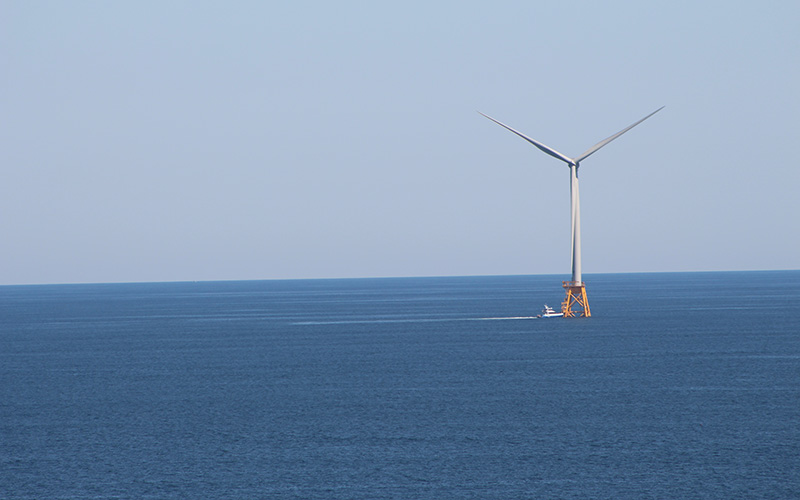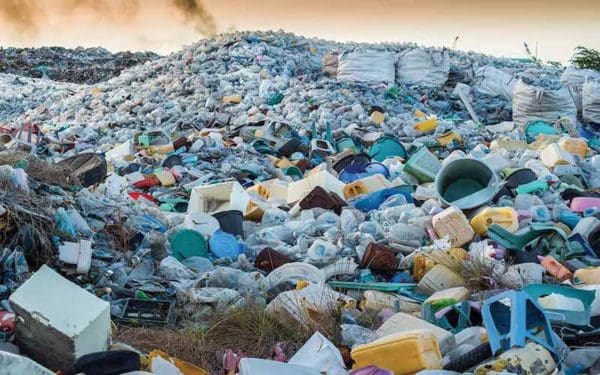
New England needs to harness the power of wind so that everyone can upgrade to affordable, clean, and modern energy. Photo: Laurie O’Reilly.
We ring in the new year with President Trump vowing to end progress on one of our most critical energy upgrades: Offshore wind. There’s an uncomfortable irony that an executive order to stop offshore wind (and another declaring an “energy emergency”) comes on the heels of 2024, which ranked as the hottest year on record. That record-breaking trend continues every year as we overheat the planet with polluting fossil fuels.
Most people want energy that doesn’t empty our bank accounts or pollute the environment. And the claim of an “emergency” is unfounded – as New England moves swiftly to electrify heating and transportation. Clean offshore wind is critical to meeting our needs for affordable energy. So, can Trump stop offshore wind in New England?
The answer is a mixed bag – let’s dive in.
Permitted or Fully Constructed and Operating Offshore Wind Projects: Probably Not
Trump is unlikely to target already constructed, fully operational offshore wind turbines, like those at South Fork Wind, off the coast of Rhode Island. The administration’s offshore wind moratorium, issued on January 20, specifically halts new or renewed permits, approvals, and leases. There’s not much the administration can do for projects that have received all their necessary permits, finished construction, and are operating right now.
We’re not completely in the clear, though. The executive order does give the Department of Interior the power to review existing permitted projects and make a recommendation if those should be revoked. In New England, that could impact three projects which are slated to deliver enough energy to power 1.75 million homes. So, we may need to prepare for proposed roadblocks to these projects down the road.
However, revoking already issued permits would raise thorny legal questions and almost certainly be met with legal challenges, with developers having a strong case to put any such revocation on hold and ultimately prevail in court.
Leased But Not Permitted Offshore Wind Projects: Yes
Some offshore wind projects on tap for New England have only been leased – that is, their locations chosen and auctioned off to developers to begin developing construction plans. These projects, like those planned in the Gulf of Maine, have not yet begun any federal permitting processes that allow for construction. While these developers may be able to move forward with surveying the leased areas, the Trump administration has the power to delay any permits these projects would need to move forward to begin construction. That means an unnecessary obstruction in getting clean, affordable energy to New Englanders.
Bids for New Offshore Wind Lease Areas: Yes
The Trump administration can refuse to lease any additional wind areas in federal waters to companies that want to build offshore wind. We can probably expect at least four years of silence on any new leases in federal waters, like additional areas in the Gulf of Maine. So, while states may move forward with the process of purchasing energy produced by wind projects built at existing leased areas, the federal government can severely hamper how quickly we build out offshore wind by blocking further leasing in federal waters.
What Does This Mean for New England?
There’s some good news in that not all offshore wind is in peril. States still have the power to contract the energy produced from offshore wind projects, and fully permitted projects will be able to move forward with construction and start selling power into the grid. We can count on New England’s leaders to push forward in upgrading the way we power our lives to cleaner, cheaper, and more efficient energy.
And here at CLF, we will use our combined legal and political expertise to determine the best means to challenge the Trump administration’s obstacles to building out offshore wind. We are working with our partners to figure out how we can keep the best interests of our families and businesses at the forefront – slowing climate change to protect the world and people we love. We will keep you informed on what those strategies look like and how you can get involved.
Finally, your voice is indispensable in our fight to keep offshore wind moving. You can contact your governor asking them to stay committed to progress on our clean energy future, so that we stand strong against Trump’s attack on a modern, affordable energy system.



